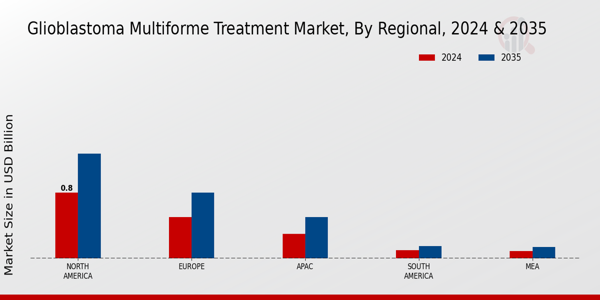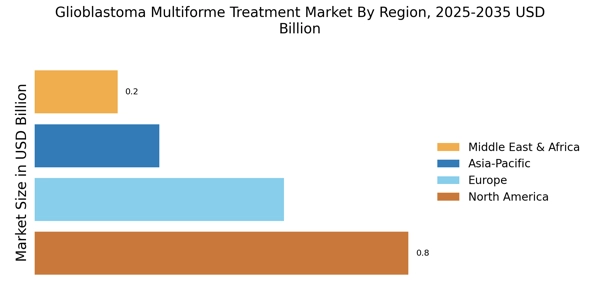Growing Investment in Cancer Research
The increasing investment in cancer research is a significant catalyst for the Glioblastoma Multiforme Treatment Market. Governments and private organizations are allocating substantial funds to explore innovative treatment options for GBM, which has historically been challenging to treat. For instance, funding for clinical trials and research initiatives has surged, with billions of dollars directed towards understanding the molecular mechanisms of GBM. This financial commitment is likely to accelerate the development of novel therapies, including targeted treatments and immunotherapies. As a result, the Glioblastoma Multiforme Treatment Market is poised for growth, driven by the influx of new treatment modalities that emerge from these research endeavors. The collaborative efforts between academia, industry, and government entities further enhance the potential for breakthroughs in GBM treatment.
Regulatory Support for Innovative Therapies
Regulatory support for innovative therapies is emerging as a key driver in the Glioblastoma Multiforme Treatment Market. Regulatory agencies are increasingly recognizing the need for expedited approval processes for breakthrough therapies that address unmet medical needs in GBM treatment. Initiatives such as the FDA's Breakthrough Therapy Designation and the European Medicines Agency's PRIME scheme are designed to facilitate the development and approval of promising treatments. This supportive regulatory environment encourages pharmaceutical companies to invest in research and development, as the pathway to market becomes more accessible. As a result, the Glioblastoma Multiforme Treatment Market is likely to witness a surge in the introduction of novel therapies, ultimately benefiting patients with this aggressive form of brain cancer.
Rising Awareness and Advocacy for Brain Cancer
The growing awareness and advocacy for brain cancer, particularly Glioblastoma Multiforme, is influencing the Glioblastoma Multiforme Treatment Market. Increased public knowledge about the disease has led to heightened demand for effective treatment options and support services. Advocacy groups are actively promoting research funding and patient education, which is likely to result in more patients seeking treatment and participating in clinical trials. This trend not only fosters a supportive environment for patients but also encourages pharmaceutical companies to invest in the development of new therapies. As awareness campaigns continue to gain momentum, the Glioblastoma Multiforme Treatment Market is expected to benefit from an influx of patients and increased funding for research initiatives aimed at improving treatment outcomes.
Increasing Incidence of Glioblastoma Multiforme
The rising incidence of Glioblastoma Multiforme (GBM) is a pivotal driver for the Glioblastoma Multiforme Treatment Market. Recent statistics indicate that GBM accounts for approximately 15% of all brain tumors, with an estimated annual incidence rate of 3.19 per 100,000 individuals. This alarming trend necessitates the development and availability of effective treatment options, thereby propelling market growth. As the population ages and environmental factors contribute to the disease's prevalence, healthcare systems are compelled to allocate more resources towards research and treatment modalities. Consequently, pharmaceutical companies are increasingly investing in innovative therapies, which is likely to enhance the treatment landscape for GBM patients. The urgency to address this growing health concern underscores the importance of advancements in the Glioblastoma Multiforme Treatment Market.
Technological Advancements in Treatment Modalities
Technological innovations play a crucial role in shaping the Glioblastoma Multiforme Treatment Market. The advent of advanced imaging techniques, such as MRI and PET scans, has significantly improved the accuracy of GBM diagnosis and treatment planning. Furthermore, the integration of artificial intelligence in treatment protocols is emerging as a transformative force, enabling personalized treatment strategies that cater to individual patient needs. The development of novel surgical techniques, including minimally invasive procedures, has also enhanced patient outcomes and reduced recovery times. As these technologies continue to evolve, they are expected to drive the demand for new treatment options, thereby expanding the Glioblastoma Multiforme Treatment Market. The ongoing research and development efforts in this domain suggest a promising future for patients and healthcare providers alike.



















Leave a Comment